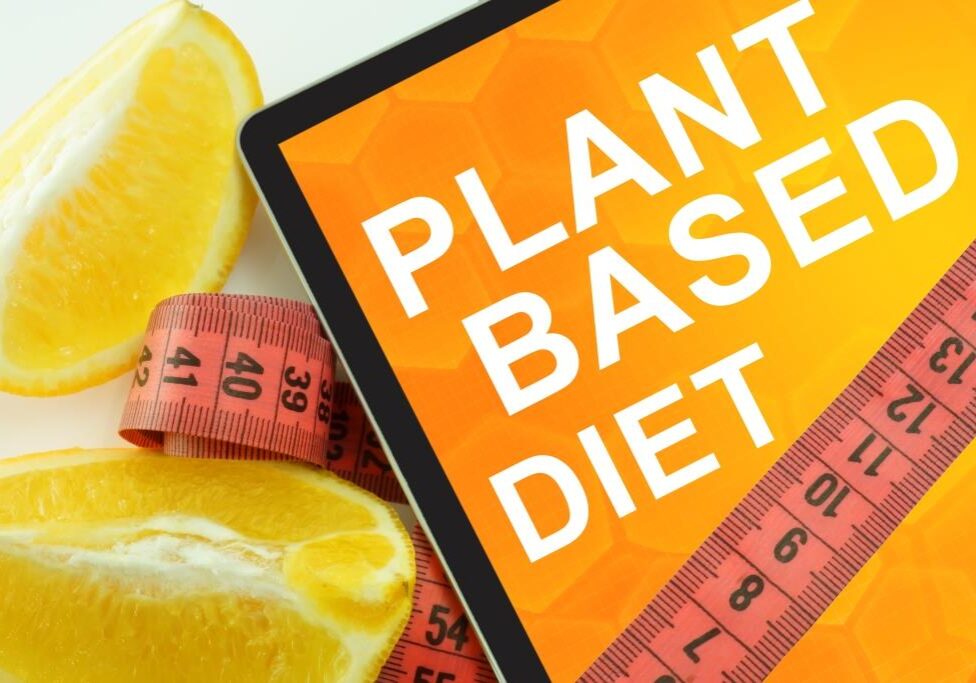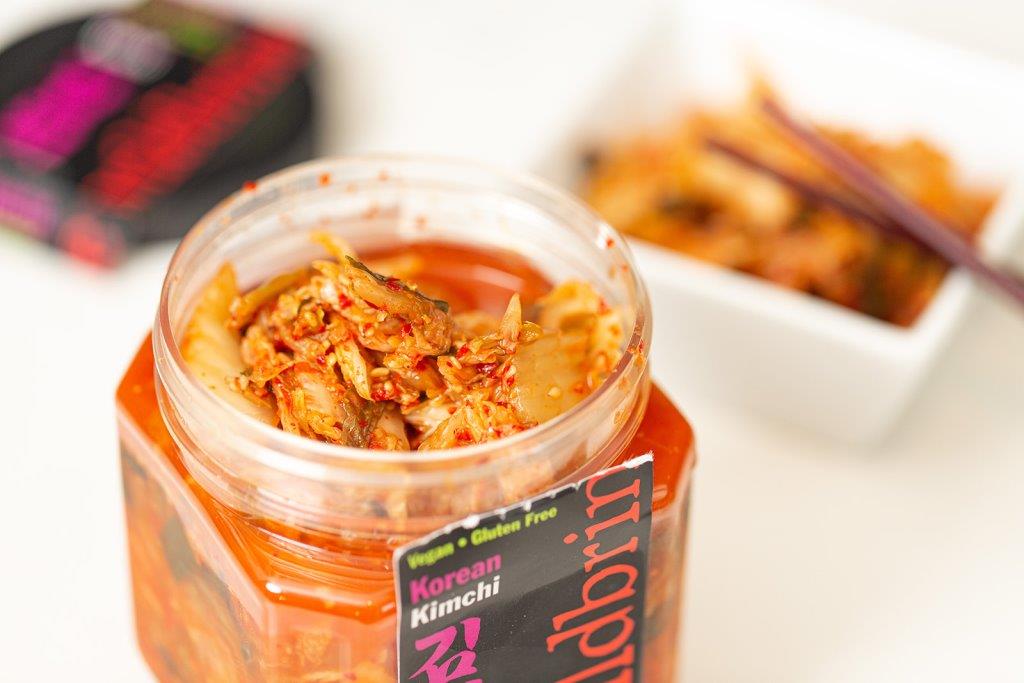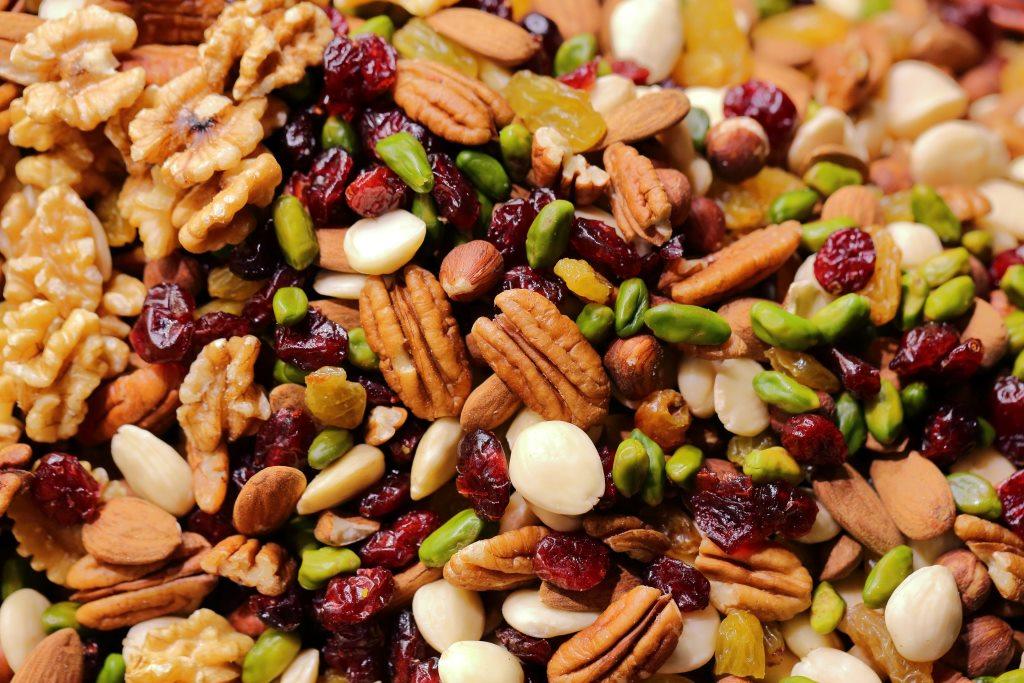Sold on the benefits of a plant-based diet, but not sure what to buy? Confused about quantities? Or worried about missing out on essential nutrients? If so, we can show you how to quickly compile a complete plant-based diet grocery list in three simple steps.
Choose a Variety of Foods
Man cannot live by bread alone – or by banana smoothies or avocado toast or peanut butter or any other of our favorite foods. To be the healthiest versions of ourselves, we need a wide array of nutrients from each of the major food groups.
Vegetables and Fruits are low in fat and calories and are packed with fiber, vitamins, minerals, and antioxidants that aid digestion, support tissue growth, boost immunity, and fight disease. Recommended daily serving is 1-2 cups of fruit and 1-3 cups of vegetables.
Grains are the foundation of many plant-based meals. Loaded with B vitamins and essential minerals, grains are a source of protein, fiber, and complex carbohydrates, which power our bodies’ systems. Recommended daily serving is 3-8 ounces.
Proteins are referred to as the building blocks of living cells. Commonly associated with animal products, proteins also are found in many plant-based foods (legumes, peas, lentils, nuts, seeds, and soy). Recommended daily serving is 2-6.5 ounces.
Dairy provides calcium for strong bones and teeth. Milk, cheese, and yogurt products come from animals; however, fortified non-dairy plant-based alternatives can be every bit as nutritious. Choose low-fat, low-sugar options and check the label for calcium, as well as vitamin D, which aids in the absorption of calcium. Recommended daily serving is 3 cups.
Follow Recommended Daily Allowances for Essential Vitamins and Minerals
Monitor your intake of vitamins D and B12, iron, calcium, omega-3 fatty acids, zinc, and iodine closely. These nutrients (particularly vitamin B12) can be lacking in a plant-based diet. However, a plant-based diet grocery list that includes fortified foods, in addition to plenty of veggies, fruits, grains, legumes, nuts, and seeds, will get you to where you need to be.
Knowing how to increase the potency of the nutrients you’re consuming helps as well. For example, vitamins C and D aid in the absorption of iron and calcium, so look for these combos when selecting foods. Also, minerals in veggies, nuts, and seeds become more bioavailable when these foods are fermented, toasted, or soaked and allowed to sprout. Sound like of lot of work? Not really. Prepacked toasted nuts and sprouted seeds are readily available in the produce section or on the snack aisle of your local market. All you have to do is toss them in your cart. Fermented veggies like wildbrine sauerkrauts, kimchi, and salsas with active probiotics (for a happy gut) can be found with the refrigerated foods. Just order online and wildbrine will deliver them right to your door.
As a general rule, nutrients are most effective when they come from the foods we eat. However, if you suspect you’re not getting enough of a particular vitamin or mineral, talk to your doctor about adding a daily supplement to your diet. There are many well-tested, name-brand options available. Be cautious though. Ingesting too much of a particular nutrient can be as harmful as ingesting too little.
Make Clean Eating a Part of Your Daily Diet Routine
Clean eating is about squeezing every last bit of nourishment out of your daily diet by consuming minimally processed, nutrient-rich whole foods, free of added chemicals, sugar, salt, and unhealthy fats. Referred to as “real foods,” most are single-ingredient, plant-based foods that humans have been chowing down on – well, pretty much forever. Pretend, just for a moment, that you were once a hunter-gatherer (minus the hunter part). If you can picture yourself plucking a food from a tree or pulling it out of the earth, then it deserves a spot in your shopping cart. In other words, when you can, choose plant-based foods that are as fresh and as close to their natural states as possible.
This doesn’t mean you have to rule out frozen foods entirely, as long as you’re careful to avoid added sugars, heavy syrups, and sauces. All fruits and vegetables begin to lose their nutritional value as soon as they are picked, but those destined for the freezer are processed and frozen shortly after being harvested, locking in their nutritional value. And it’s hard to argue with the lower price and added convenience of cooking with foods that have been pre-washed and chopped. The same thought process holds true for canned goods. Beans of all ilk (kidney, black, cannellini, lima, pinto, navy) are a pantry staple – even if canned. Just be sure to select low-sodium varieties and always drain and rinse before use. In a pinch, when a last-minute trip to the market for fresh produce isn’t possible, frozen or canned is the next best thing.
A Plant-Based Diet Grocery List that Checks All the Right Boxes
Variety. Essential nutrients. Real foods. Stock your kitchen with selections from the plant-based diet grocery list below, and you’ll have everything you need to conjure up hearty macro bowls, refreshing salads and smoothies, a sizzling stir-fry, and a host of other gut healthy meals, including our favorites – gooey veggie lasagna and spicy vegan jambalaya.
GRAINS
Amaranth
Barley
Whole-grain bread that has at least 3 grams of fiber
Buckwheat
Cereals with bran and vitamin B12
Oats
Quinoa
Wild Rice
VEGETABLES
Asparagus
Avocado
Bell peppers (all colors)
Broccoli
Brussel sprouts
Cabbage (Red and Green)
Carrots
Cauliflower
Dark leafy greens (Kale, Spinach, Swiss Chard, Collard Greens)
Garlic (a delicious prebiotic)
Jicama
Mushrooms (Brown or Cremini for vitamin B12)
Nori Dried Seaweed (for iodine and vitamin B12)
Olives
Onions
Summer and Winter Squash
Sweet Potatoes and Yams
Tomatoes
wildbrine Vegan Kimchi and Sauerkrauts
FRUITS
Be sure to buy fruits in season, when their nutrients are at their highest. Mobile apps like Harvest provide an easy reference guide.
Apples
Bananas
Berries (Blueberries, Strawberries, Cranberries, Blackberries, Raspberries)
Cantaloupe
Cherries
Citrus (Grapefruit, Lemons, Limes, Oranges)
Kiwi
Papaya
Pineapple
Pomegranate
Red Grapes
Watermelon
PROTEINS
Beans (Edamame, Lentils, White, Pinto, Kidney, Black, Navy, Lima)
Chickpeas
Green Peas
Hummus
Impossible Burger vitamin B12-fortified meat alternative
Impossible Sausage vitamin B12-fortified meat alternative
Egg substitutes
Nut Butters (Almond, Peanut, Pistachio)
Nuts (raw or dry roasted Almonds, Pistachios, Walnuts, Cashews, Pecans)
Tempeh (natural source of vitamin B12)
Tofu
Seeds (Flaxseed, Chia, Hemp, Sesame, Pumpkin)
DAIRY ALTERNATIVES
Watch the sugar levels in all dairy alternatives.
Soymilk
Nut milk
Coconut or cashew milk yogurt
wildCREAMERY Vegan Dips, Butter, Sour Cream, and Cream Cheese
OILS, VINEGARS, SAUCES, SPICES
Oils (Olive, Avocado, Flaxseed)
Wildbrine Srirachas and Salsas
Vinegars (Apple Cider, Balsamic, Rice)
Tahini (smooth paste made from Sesame Seeds; great as a dip or condiment)
Low sodium soy sauce
wildbrine fish-free Srirachas (fermented hot sauces)
Nutritional yeast (adds cheesy texture and flavor, as well as a good source of vitamin B12)
Must-have spices: Paprika, Turmeric, Cayenne, Oregano, Bay Leaves
And don’t forget dark chocolate with 70% cocoa for iron, magnesium, zinc and antioxidants. When those cravings hit, a little bit goes a long way!


